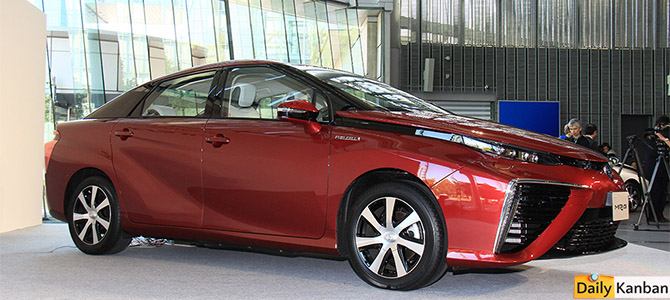The obvious question then, is whether the Mirai can follow in the footsteps of its forerunner and achieve mass-market success. Clearly the Mirai’s challenges are greater than those faced by the Prius, most notably in terms of its need for a all-new hydrogen fueling infrastructure. By 2016 only 48 hydrogen refueling stations will be open here in California, where the first Mirai deliveries will take place, with 12 more to come in Northeastern states. Worryingly, much work remains to be done, including developing pumps which can accurately meter hydrogen compressed to 10,000 PSI for sale to consumers.






